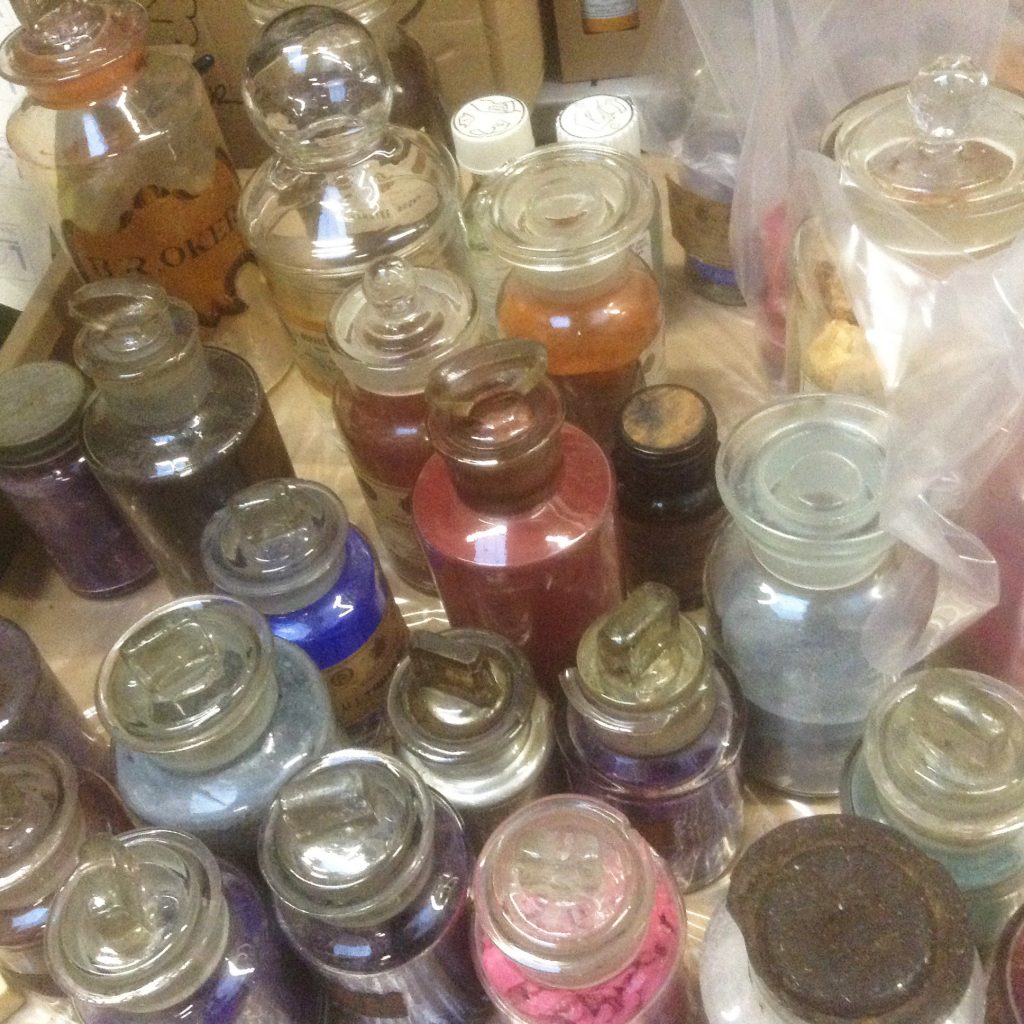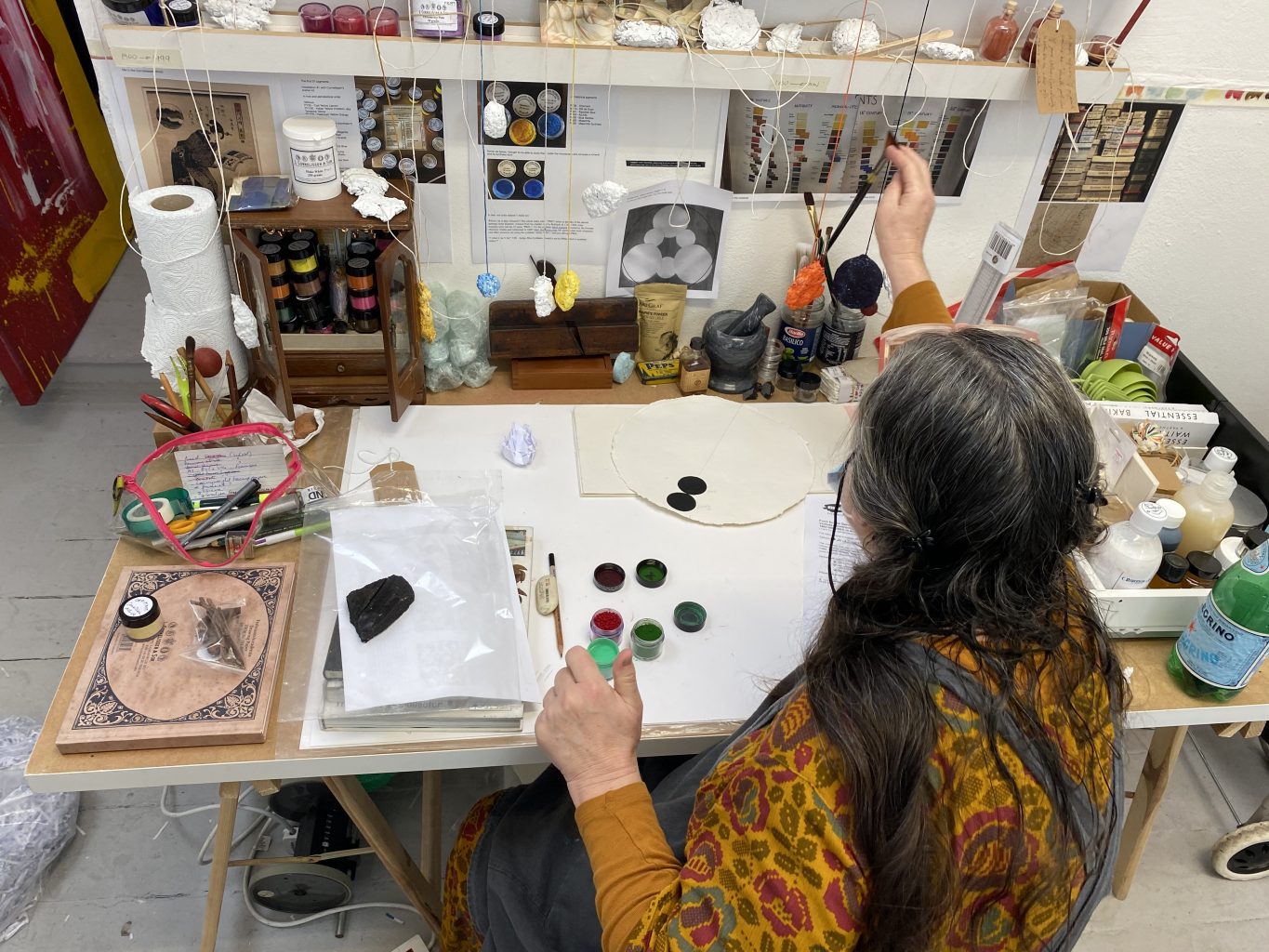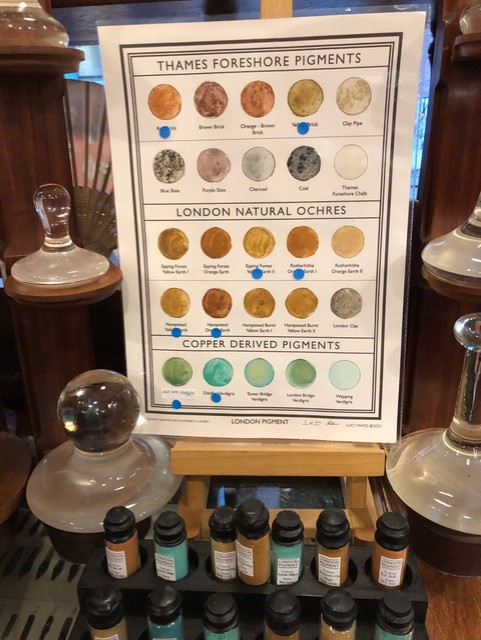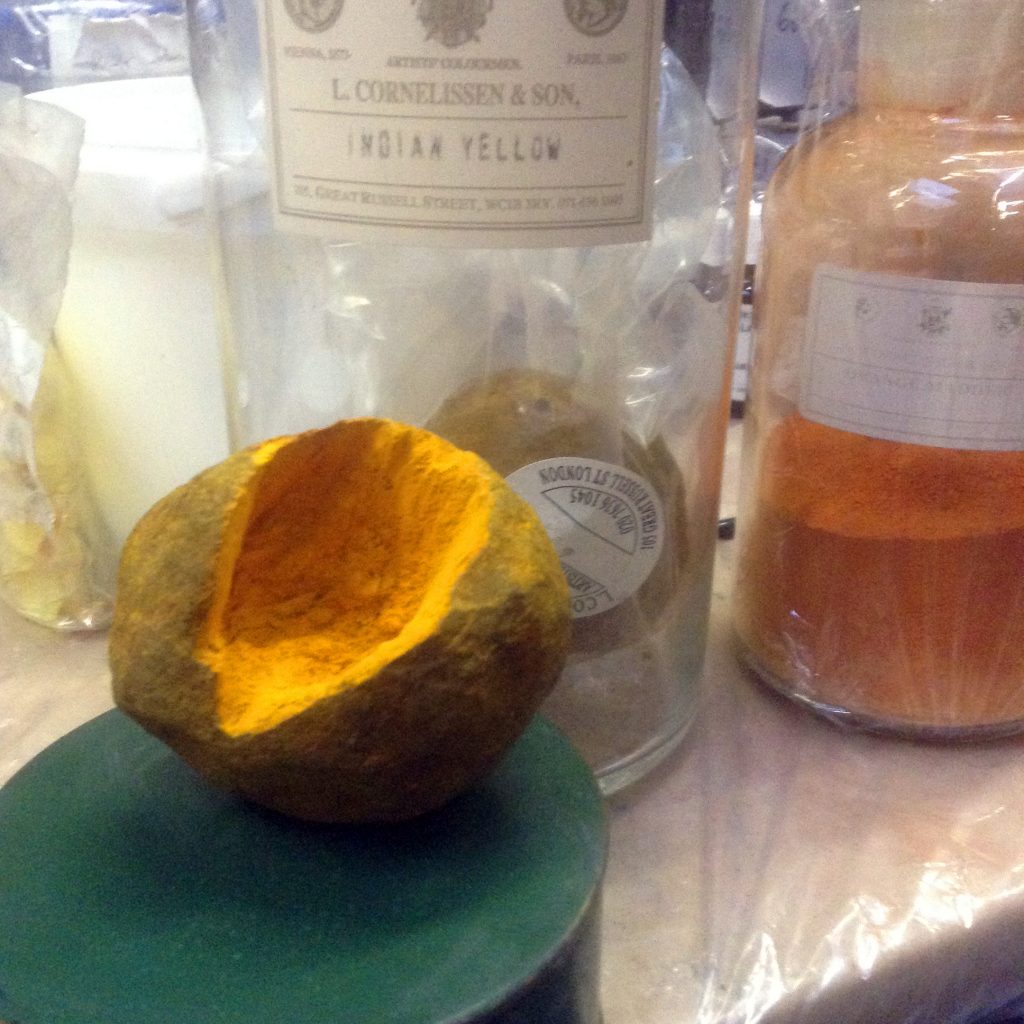What do Indian Yellow, Bohemian Terre Verte and Dragon’s Blood all have in common? Although they sound like they could be ingredients used by one of J K Rowling’s characters, they are in fact all historic pigments recently uncovered by MA Art & Material Histories student Sabine Pinon, in the expansive archive of L.Cornelissen & Son, the celebrated art materials emporium on Great Russell Street near The British Museum. As part of her research on the MA in Art & Material Histories, Sabine has been assisting with an audit of the shop’s archives, which has been accumulating in their storage facility for over 100 years.

Sabine Pinon is passionate about art materials, and in particular pigment, having spent a large part of her working life surrounded by them in the art supply centres she owns in Australia. What started out as inquisitiveness about the materials she was selling to her customers, developed into years of research into art’s materials, their origins and their use.
Sabine’s fascinating blog documenting her research, In Bed with Mona Lisa, is an ever expanding “resource centre” about the materials and tools used by artists today. From charcoal to oil sticks, from gouache to acrylic and vinyl paints, and from coloured pencils to brushes, Sabine has explored it. As well as spending a lot of time reading about materials, her research has taken her around the world visiting and interviewing artisan manufacturers, shedding light on the often traditional production processes involved.

A large portion of her research concerns pigment and she has written extensively on the subject. In fact, she is in the process of writing a comprehensive book based on her research ‘Hues in Tubes and How They Made a Name for Themselves’. Her work examines the different types of pigment (organic or inorganic, historic or modern), their sources, their use, their history and their future. Part of her research on the MA in Art & Material Histories involves analysing the structure and shape of pigment particles under the microscope and exploring how the tiniest of changes in the shape of the particle affects the hue that we see. With the support of Dr Tracey Chaplin, Conservation Tutor at the Art School and expert in microscopy and technical examination, Sabine is recording and charting the precise molecular shape of up to 100 historic pigments.

Sabine started working with Cornelissen after contacting Lucy Mayes, founder of London Pigment, as part of her Masters research. An artist and pigment-maker, Lucy also works at Cornelissen and invited Sabine to assist in an exploration of the dusty archive which holds some fascinating historical pieces. Whilst cataloguing the archive’s contents, Sabine unearthed pigments she hadn’t come across before – some rare and valuable: two balls of Indian Yellow, a pigment supposedly made from the urine of cows or yaks force-fed mango leaves, that hasn’t been produced since 1904; Frankfurt Black, made from roasted wood, vine, or vegetable matter; French Vermillion, originally made from the powdered mineral cinnabar.

And it’s not just jars of pigment Sabine is uncovering. Cornelissen sources, processes and packs more than 100 pigments, as well as other art materials, from all over the world, and Sabine came across a copy of a letter that gives a fascinating insight into how they source Isinglass, a fish-based glue used since medieval times with pigment and gold leaf. The letter, sent to a caviar farm in Kyzylbalyk, Kazakhastan, asked if they may be able to provide the gelatine from the inner membrane of the Sturgeon’s air bladder in order to make this specialist adhesive.
Describing the MA in Art & Material Histories and how the course is challenging her research practice, Sabine said: “I love we have input from so many angles and get to discuss and think about our materials in so many different contexts: historical, philosophical, curatorial, personal, with practising artists, and of course, with hands-on elements. This is an incredibly nourishing experience opening new vistas onto even sometimes well-known fields… exciting!”
Sabine is planning to return to the audit of Cornelissen’s archive after the current Lockdown restrictions are lifted, resume microscopy research into the particles of historic pigments and interview pigment specialists including Onya MaCausland and Keith Edwards. She will also be working towards a presentation of her research at the Art School Show.


